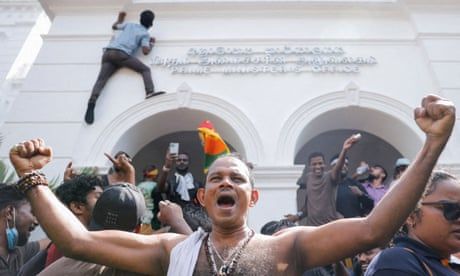
Saturday’s election will be the first since a people’s movement toppled the president. But other problems have proved harder to shift
Just over two years ago, a mood of both crisis and optimism gripped Sri Lanka. Across the Indian Ocean island, the population of 23 million people was enduring hunger, medical shortages and unemployment as part of the worst economic disaster in its history.
Yet there was also a ripple of hope. A youth-led movement known as the aragalaya (struggle) had successfully toppled the authoritarian president Gotabaya Rajapaksa and his powerful family dynasty, who were accused of bankrupting the country through corrupt deals and policies. Protesters overran Rajapaksa’s presidential mansion, lying on his bed, swimming in his pool and working out in his gym.
Continue reading...